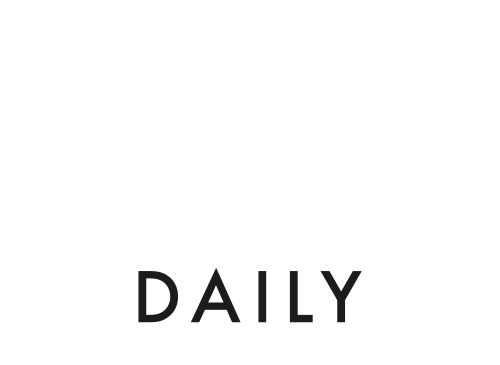Segway’s shared vehicles have made 165 million trips across Europe in the last year.
Those trips form only part of the journeys made from Segway’s two million shared vehicles it delivered globally to 240 operators across 500 cities to date.
And that’s all manifested into a series of milestones over the last year, such as hosting the world at the 2024 Olympics Games and receiving global recognition for its commitment to a circular economy.
Behind all these milestones, and a long list of newly unveiled micromobility models, lies one central objective for Segway which is to optimise its clients’ Total Cost of Ownership (TCO) so that the shared micromobility business model continues to thrive.
“This is what guides the entire scope of our work,” Alan Zhao, one of Segway’s Directors, tells Zag Daily.
“This year has been a milestone for Segway as we continue to lead the shared micromobility industry not only as a vehicle solution provider but also as an initiator committed to helping improve the profitability of shared operators.
“By focusing on Total Cost of Ownership, we’ve driven greater efficiency, sustainability, and value across our products, services, and solutions for our partners and clients. Together, we are shaping a more connected and sustainable future for urban mobility.”
Hosting the world
This summer, Segway and TIER-Dott deployed 15,000 e-bikes for the Paris Olympic and Paralympic Games.
The collaboration marked a milestone in many ways. Not only was this fleet TIER-Dott’s largest ever, but Segway also gifted the operator 10,000 free rides to boost micromobility adoption and making it the largest promotion TIER-Dott has ever received from a partner.
Within six weeks, the fleet recorded one million rides completed by 500,000 users – a 70% increase compared with the same time period in 2023.
Across the Games, 3.3 million kilometres were ridden on Segway’s vehicles and TIER-Dott received a 90% positive feedback rate from its users, plus institutional recognition for the bike share scheme from Paris’ Deputy Mayor, David Belliard.
“This collaboration not only provided sustainable transportation options to urban commuters but also showcased the seamless integration of Segway’s vehicles with TIER-Dott’s efficient operational approach, proving they were perfectly suited for large-scale events,” Alan says.
“As a result, TIER-Dott’s Paris fleet received the most positive feedback in its history. This initiative reflected our commitment to demonstrating the practical benefits and efficiency of e-bike services, particularly in a globally significant city like Paris.”
Segway also took to the global stage at this year’s prestigious Micromobility Europe conference hosted by Micromobility Industries.
Held in Amsterdam, Segway showcased its latest three model launches, its Segway Pilot Lite ‘AI box’ featuring lane and pedestrian detection, and announced its year-long warranty package for shared micromobility operators.
Riding with new technology
With the launch of two new e-scooters, an e-bike, and an AI hardware module, 2024 was a busy year for Segway.
Each new piece of tech is designed with cost reduction in mind – whether that’s minimising hardware purchase costs, improving operational efficiency, or reducing the need for repair and maintenance caused by improper use in shared scenarios.
The new B200 shared e-bike is centred on five design pillars: riding safety, operational efficiency, user experience, durability, and easy maintenance. All of those pillars share the same goal of making the shared micromobility industry more profitable.
Tailored for both shared operators and the food delivery market, the B200 features a 90 kilometre range for fewer battery swaps and 26-inch PU filled tires to reduce operational and maintenance costs. Three riding modes offer real-time detection and power assistance to enhance safety and ensure a reliable journey for riders.
Segway’s latest shared e-scooter, the Max S100 comes with a brand new intuitive dashboard and more functions. Riders can use the dashboard for navigation, speed display, battery level, and zone indication, and operators can rely on it to communicate the vehicle’s status. The dashboard notifies operators when maintenance is required without staff having to check manually, saving the operational team from needing to diagnose issues themselves.
Despite Segway stating that the Max S100 is the “most cost-efficient” model of the Max series yet, Turkish micromobility operator hop credited Segway’s Max Plus X e-scooter as contributing to its 50%+ EBITDA margin.
Also launched this year is the Apex D110L shared e-scooter – the first of Segway’s Apex product line which is engineered for stability and gives an extended range of up to 100 kilometres, reducing operational needs and therefore optimising total cost of ownership for shared operators.
Turning the attention from Segway’s vehicles to the AI that powers them, the vehicle solution provider also launched Segway Pilot Lite this year. This offers all the same AI capabilities as its predecessors (the Segway Pilot and the Segway Pilot Edge) while being more cost-effective for operators.
By attaching to a wider range of compatible models as an integrated AI hardware module or as an add-on component, the Pilot Lite detects what lane the rider is riding on, pedestrian quantities, and can be customised to take action based on preset programmes, such as by providing prompts to alert riders when they’re in the wrong lane. Segway’s primary focus of the Pilot Lite is to enhance rider safety and a well-perceived shared micromobility industry that is welcomed by all road users.
Sustainability as the bottom line
Segway also came out with a series of initiatives this year that cut maintenance and hardware costs to keep sustainability as the shared micromobility industry’s bottom line.
Launched at this summer’s Micromobility Europe conference, Segway’s brand new warranty programme is a huge extension from its previous one. The ‘Segway Commercial Care’ covers 100% of key components for 12 months for shared e-bikes and shared e-scooters bought from 6 June 2024.
Segway’s vision with the launch is to cut hardware and labour costs to annually reduce component costs by up to 20%, minimise fleet downtime, and produce long-lasting products that uphold the shared micromobility industry’s bottom line of sustainability.
The vehicle solution provider’s commitment to the sustainability of its vehicles has been internationally recognised, with the world’s first Life Cycle Assessment Verification Statement for e-scooters going to Segway’s S90L and Max Plus X models last year.
Since then, the company has been focused on increasing its reliance on recycled materials and reducing the carbon emissions associated with the raw material extraction stage of its products. Its commitment to environmental responsibility means Segway’s Apex D110 e-scooter has already received an LCA in response to the company’s efforts to cut the D110’s raw materials.
“These milestones achieved in 2024 reflect Segway Commercial’s ongoing commitment to innovation and the advancement of sustainable micromobility through comprehensive Total Cost of Ownership (TCO) optimization strategies.
“As we look ahead to 2025, our focus is on expanding our product offerings, exploring new technologies, and refining our TCO models with even more sustainable initiatives to further reduce environmental impact. Our goal is to lead the next generation of smart, efficient, safe and eco-friendly transportation solutions, working closely with operators to drive the evolution of sustainable micromobility.”





